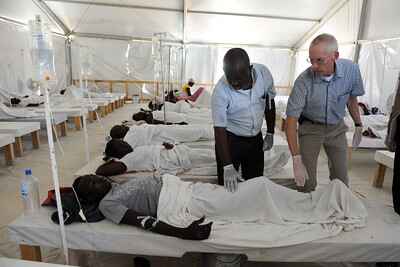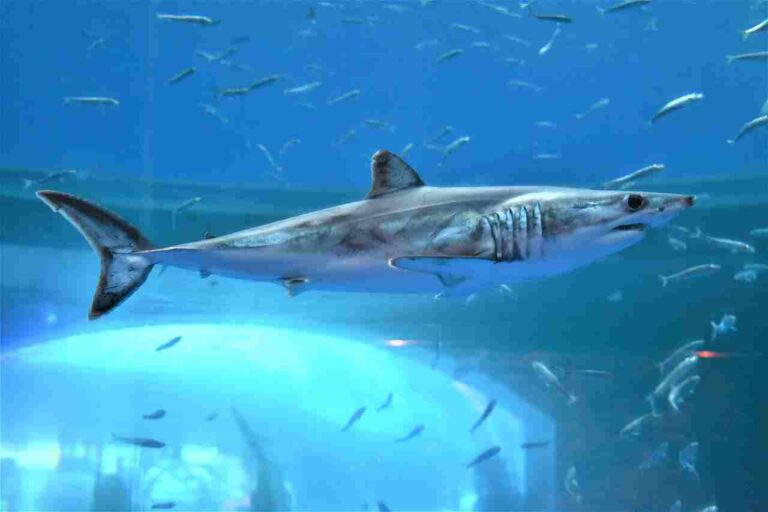5 Effects of Water Pollution Explained
Effects of water pollution are; water scarcity, economic loss, food chain disruption, loss of aquatic life, and human illnesses like diarrhea, typhoid and cholera.
This article discusses the effects of water pollution, as follows;
1). Water Scarcity (as one of the Effects of Water Pollution)
When available water resources become polluted, it can lead to scarcity of usable water for various purposes.
Scarcity of water caused by pollution is a problem in many parts of the world, where water resources are exposed to the influence of unsustainable human activities.
Areas that are most vulnerable to this problem are those in which there are few usable sources of water, and/or limited volume. This includes regions prone to desertification, as well as those whose water resources are dominantly marine.
In such areas, water for domestic use may be available from limited sources such as aquifers or surface water bodies. Exposing such water bodies to unsustainable methods of and waste disposal (like unsanitary landfilling) increases the risk of pollution, and resultant water scarcity.
Water scarcity is a major effect due to its social, environmental and economic implications.

2). Economic Loss
Water pollution has both social and economic effects [5].
The ways in which water pollution affects the economy, all center around a decline in economic functions that depend on water. These activities include manufacturing, raw material extraction, agriculture, tourism, healthcare and fishing.
Losses caused by water pollution can be particularly severe, so that they may reflect in terms of a notable decline in Gross Domestic Product (GDP) values.
Another avenue by which water pollution causes economic loss is through the implementation of costly remediation procedures to restore the quality of degraded water resources. Generally, the scale of economic impact is proportional to the scale and severity of water pollution (which is equivalent to the concentration of pollutants) [1].
Lastly, water pollution affects the society by reducing the quality of life in affected areas, and causing health ailments that lead to further economic decline.
3). Food Chain Disruption (as one of the Effects of Water Pollution)
Processes that disrupt the food chain are those which create significant imbalance in the distribution of food and bioenergy across the various trophic levels that make up the ecosystem.
Water pollution affects the entire food chain because water is an essential resource that all organisms require for their survival.
The consumption and natural recycling of water resources is what underlies most interactions between abiotic and biotic components, which in turn determine the long-term efficiency and sustainability of food chains and energy pyramids.
Effects of water pollution on living things range from decreased metabolic efficiency and illness to loss of death and biodiversity-loss.
Water pollution affects plants (which are primary producers) by altering the supply of nutrients to unusual and toxic supply-trends. In cases where the cause of water pollution is leaching of agricultural fertilizer, the leached nutrients can cause rapid and unnatural growth of algae (in a process called eutrophication) which can be harmful to other aquatic organisms.
In the aquatic ecosystem and beyond, heterotrophic consumers are also affected by water pollution. These organisms feed directly or indirectly on plants, and may ingest large quantities of pollutants in the course of feeding, which may have adverse effects on survival rates and species richness [3] [4].
4). Loss of Aquatic Life
Water pollution affects aquatic life in a negative manner, through a variety of effects that range from decreasing food and oxygen supplies, to poisoning and death.
Loss of aquatic life as a result of water pollution can occur on a large-scale in severe cases like voluminous oil spills. In such cases, aquatic plants and animals are unable to survive because of a lack of sufficient dissolved oxygen for their respiration, as well as due to the presence of toxic organic compounds in the water.
All water pollutants including sediments and heavy metals, can reduce aquatic biodiversity when present in high concentrations. The ripple effect of aquatic organic losses may extend into terrestrial ecosystems like forests and urban environments, that depend on aquatic life in one way or another.

5). Human Illnesses (as one of the Effects of Water Pollution)
Water pollution affects the environment and human health by creating unsanitary conditions and encouraging both the growth and spread of pathogens that causes human illnesses.
Interacting with polluted water exposes humans to internal and external toxification, which can affect the functioning of organs and metabolic processes.
Diseases caused by water pollution are; hepatitis, dysentery, cholera, typhoid, cancer, amoebiasis, diarrhea, schistosomiasis, encephalitis, giardiasis, cryptosporidiosis, trachoma, and some skin diseases. Malnutrition can also be traced to water pollution in some cases [2].

Conclusion
Effects of water pollution are;
1. Water Scarcity
2. Economic Loss
3. Food Chain Disruption
4. Loss of Aquatic Life
5. Human Illnesses
References
1). Cai, M.; Li, K. (2011). "Economic Losses From Marine Pollution Adjacent to Pearl River Estuary, China." Procedia Engineering 18:43–52. Available at: https://doi.org/10.1016/j.proeng.2011.11.008. (Accessed 25 April 2023).
2). Lin, L.; Yang, H.; Xu, X. (2022). "Effects of Water Pollution on Human Health and Disease Heterogeneity: A Review." Front. Environ. Sci. 10:880246. Available at: https://doi.org/10.3389/fenvs.2022.880246. (Accessed 25 April 2023).
3). Mahboob, S.; Al-Ghanim, K. A.; Al-Misned, F.; Shahid, T.; Sultana, S.; Sultan, T.; Hussain, B.; Ahmed, Z. (2019). "Impact of Water Pollution on Trophic Transfer of Fatty Acids in Fish, Microalgae, and Zoobenthos in the Food Web of a Freshwater Ecosystem." Biomolecules. 2019 Jun 14;9(6):231. Available at: https://doi.org/10.3390/biom9060231. (Accessed 25 April 2023).
4). Shepard, D. (2018). "Food Chains and How They Are Affected by Water Pollution." Available at: https://sciencing.com/food-chains-affected-water-pollution-7712.html. (Accessed 25 April 2023).
5). Yao, H.; You, Z.; Liu, B. (2016). "Economic Estimation of the Losses Caused by Surface Water Pollution Accidents in China From the Perspective of Water Bodies' Functions." Int J Environ Res Public Health. 2016 Jan 22;13(2):154. Available at: https://doi.org/10.3390/ijerph13020154. (Accessed 25 April 2023).






